#native birds of Alaska
Explore tagged Tumblr posts
Text
The Brooks Range is essential for the Alaska Native peoples who live, hunt, and fish in Northwest Alaska. It's home to the world's only remaining populations of migrating caribou, and dozens of migratory and boreal bird species, from Blackpoll Warblers to Arctic Loons. The Ambler Road proposal puts the Brooks Range and everything within it at risk. If built, this will not be a simple road, but a 211-mile industrial corridor that would threaten North America's largest protected and roadless region, as well as the food security and clean water of Alaska Native Tribes. It will cut through 1,200 river crossings, thousands of acres of wetlands, and migration pathways.
Sign now
#ecology#enviromentalism#alaska#Brooks Range#caribou#bird conservation#biodiversity#Ambler Road Proposal#bureau of land management#indigenous rights#alaska native
56 notes
·
View notes
Photo
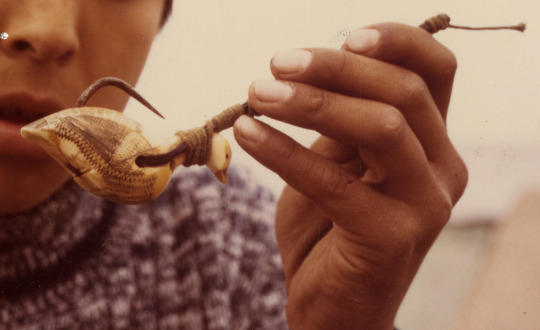

Art Jessup of Kotzebue, Alaska, holds a ptarmigan fishhook from the 1870s. Photograph, July 31, 1973.
Record Group 79: Records of the National Park Service
Series: Alaska Task Force Photographs
File Unit: Ethnography and Subsistence
Image description: Art Jessup holds a large fishhook, maybe six inches long. The hook passes through a carved bird, probably ivory. Crosshatching gives shade and texture to the bird’s feathers, and its beak is colored yellow.
Transcription:
MASTER FILE
Towns + Villages
Outside the [?] A.
258913-3418
DATE 7/31/73
FIELD # 2589-13
SUBJECT Ptarmigan fishhook about 100 years old held by Art Jissys (Jessup?)
LOCATION Kotzebue
CREDIT: NATIONAL PARK SERVICE
PHOTOGRAPH BY M. WOODBRIDGE WILLIAMS
1776-73
ALASKA TASK FORCE MASTER FILE
#archivesgov#July 31#1973#1970s#Kotzebue#Alaska#Alaska Native history#art#carving#ptarmigan#bird#fishhook
35 notes
·
View notes
Text
Things Biden and the Democrats did, this week #15
April 19-26 2024
President Biden appeared along side Congresswoman Alexandria Ocasio-Cortez and Senators Ed Markey and Bernie Sanders to announce major climate action. Biden announced a program, Solar For All, 7 billion dollars aimed at supporting low income house holds install solar power in their homes. The program will support 900,000 households across the country getting solar. Lower the average energy bill for a family by $400 a month and avoid more than 30 million metric tons of carbon pollution over the next 25 years. The boost in solar installation will help create 200,000 new jobs across the country. The President also announced the launch of the Climate Conservation Crops. modeled on FDR's Civilian Civilian Conservation Corps and JFK's Peace Corps, Biden's Climate Conservation Crops will be a program where young people can connect with climate projects across the country and be paid to help protect the planet. The Corps will be 20,000 strong, with 2,000 openings listed right now on their webpage across 36 states DC and Puerto Rico.
The Department of Labor finalized a new rule on overtime. Currently employers are only required to pay overtime to workers making under $35,568. Under the new ruling that will be raised to workers making $43,888, and in January 2025 raised again to workers making $58,656 and under. This will bring overtime pay to 4 million more workers and transfer $1.5 billion from the pockets of companies to workers. It also fixes to raise the level with inflation every 3 years starting in 2027.
The EPA announced a $1 billion dollar program to help replace heavily duty vehicles with clean energy versions. There are currently 3 million class 6 and 7 vehicles, school buses, box trucks dump trucks, street sweepers, delivery trucks, bucket trucks, and utility trucks, in use. 70% of the funds will go to replacing School Buses with Clean energy buses and the remaining 30% will go to replacing Vocational Vehicles like dump trucks and street sweepers. Heavy Duty vehicles on top of green house cases release harmful nitrogen oxide and fine particulate matter and replacing them will not only combat climate change but improve public health.
The Department of Interior took actions to protect 13 million acres of Alaska wild land is protected and to secure the livelihood of Alaska Native peoples who rely on this land. The Administration refused oil and mining rights on the vast areas of Alaska land as well as a 210 miles road through the northern wildernesses. This area represents valuable habitat for caribou and endangered polar bears, as well as millions of migrating birds.
The Department of Transportation announced finalized rules requiring airlines to give automatic cash refunds for canceled flights and other inconvenience. The refunds will be automatic meaning passengers will not have apply for them, prompt the airlines are required to refund a credit card purchase in 7 days, and require repayment in full and in kind, airlines can not substitute travel vouchers for cash. The DOT also announced new rules to protect airline travelers from junk fees, airlines and ticket agents must now clearly tell travelers upfront about all fees so no one is surprised by a hidden fee.
The EPA announced finalized rules on emissions standards for fuel burning power plants. The new rules include a tightening of Mercury and Air Toxics Standards, requiring a 70% reduction in mercury. It also had rules protecting ground water, new rules will require coal powered plants to remove 660 million pounds per year of pollutants discharged through wastewater, and for the first time federally regulates the dumping of coal ash, requiring safe dump sites that will not leak into ground water. Finalized rules require coal fired and new natural gas-fired power plants to capture up to 90% of their carbon pollution
Security of Transportation Pete Buttigieg attended the ground breaking of a new high speed rail project to connect Los Angeles and Las Vegas. The Biden Administration announced 3 billion to support the project 5 months ago. At 218 of all electric green rail the project promises to be the fastest way to get from LA to Las Vegas. Planned to open in 2028 just in time for the LA Olympics it is the first of many planned high speed rail projects. The Biden Administration has promised $66 billion for high speed rail and the largest single investment in Amtrak ever.
The FCC announced a new rule restoring Net Neutrality. Net Neutrality requires internet service pervaders to treat all websites equally and not slow certain ones now or speed others. In 2015 under Obama the FCC passed a rule requiring Net Neutrality. However in 2017, the FCC spread headed by Trump appointed Chair Ajit Pai repealed the rules. A patchwork of Democratic controlled states, lead by California passed state level laws requiring Net Neutrality forcing ISPs to de facto keep it in place. Late last year President Biden got the opportunity to replace Pai on the FCC, giving the FCC a 3 to 2 Democratic majority which voted this week to return to the Obama era rules and protect Net Neutrality nationwide.
The FTC passed finalized regulations to ban noncompete agreements in nearly all cases. These agreements, which cover 18% of American workers, about 30 million people, prohibit workers from joining or creating competing companies for a certain period of time. The FTC estimates that workers will earn an average of $524 dollars a year more and up to 8,500 new businesses will be created each year. The new rule will still allow noncompete for senior executives who make up less than 1% of the work force. Like with the FCC, two out of the 3 FTC commissioners who voted for the new rules are Biden appointees.
The Departments of Health and Human Services and Interior have announced a joint, $1 billion project to connect tribal communities to safe drinking water. Roughly half of Tribal households lack access to clean drinking water or adequate sanitation.
At the White House The Biden Administration announced plans to protect, restore and reconnect 8 million acres of wetlands and 100,000 miles of rivers and streams. This effort will include state, local and tribal government as well as private efforts along with the federal government to protect and restore the nations freshwater environments.
The Department of Health and Human Services announced a new rule boosting privacy protection for abortions. Republicans in states like Alabama, Texas, Oklahoma and Idaho have tried to make it a crime to leave the state to seek an abortion in a state where it is legal. The new federal rule would make it illegal for health information to be shared in these cases
Vice-President Harris announced a new rule requiring staffing standards at Nursing Homes across the country. The new rules will require registered nurses on duty 24 hours, seven days a week. This represents the first time the Centers for Medicare & Medicaid Services have required specific numbers of nurses and aides in Nursing Homes that get Medicare and Medicaid funding.
The Biden Administration Announced a $6 billion deal with tech giant Micron to bring high tech manufacturing to New York. The deal is expected to see Micron invest $100 billion in Syracuse New York area as well as build a factory in Boise, Idaho. The deal will create 70,000 new jobs. It is part of the Biden Administration's effort to bring high tech chip manufacturing to America.
The Department of Education finalized the most comprehensive federal protections for Trans and other Queer students in the nation's history. The rules also overturn Trump era rules on how colleges should handle sexual assault and harassment.
#Thanks Biden#Joe Biden#climate change#trans rights#abortion rights#overtime#net neutrality#high speed rail#green energy#electric vehicles#busy fucking week#sorry for formatting change#so many things
685 notes
·
View notes
Text
One of the biggest causes of extinction is invasive species. As humans have intentionally or inadvertently moved various animals and plants around the world to places they've never been, these introduced species have caused massive amounts of damage to habitats and those who depend on them.
While invasive plants largely work by crowding out native competitors (though some actively kill their neighbors), invasive animals frequently hunt native species, sometimes to extinction. Domestic cats, for example, are responsible for the extinction of over five dozen species worldwide; they slaughter 2.4 billion native birds every year in the United States alone. The brown tree snake has driven much of Guam's native wildlife to extinction. And rats prey on native birds and other species worldwide, doing particularly devastating damage on isolated island ecosystems.
Efforts to eradicate rats from these islands leads to dramatic rebounds in any remaining native species, and allows for the reintroduction of extirpated species that may still exist elsewhere, if only in captivity. If a species' home is still overrun by invaders, it can make reintroduction impossible; the sihek (Guam kingfisher, Todiramphus cinnamominus) only exists in captivity and cannot be reintroduced until brown tree snakes are eradicated from the island.
So no wonder the people of Saint Paul Island are so concerned about even a possible rat sighting. Where there is one rat there are often more, and a pair of rats can quickly explode into a population of thousands in just a couple of years if conditions are favorable. The last rat sighting on the island was in 2019, and while that rat was eventually found deceased, it was a genuine cause for alarm. Any boat from elsewhere can bring these unwanted visitors and put native wildlife in great peril.
#invasive species#extinction#endangered species#rats#brown rats#nature#wildlife#ecology#animals#environment#conservation#science#scicomm#Alaska#birds#rewilding#habitat restoration
101 notes
·
View notes
Text
Excerpt from this story from the New York Times:
The Biden administration denied permission on Friday for an Alaska agency to build a 211-mile industrial road that would have cut through Gates of the Arctic National Park and Preserve to reach copper and zinc deposits beneath untouched wilderness.
Separately, the administration said it planned to retain protections for 28 million acres of land scattered across Alaska that the Trump administration had tried to open up to mining and oil and gas drilling. The lands include unique habitat for three major caribou herds, migratory birds and Pacific salmon.
The pair of decisions from the Interior Department is part of a steady stream of environmental moves that President Biden has taken ahead of the November election to solidify his standing among conservationists, an important constituency. Climate activists have pressured the administration to act more aggressively to protect public lands from new oil and gas projects.
“Today, my administration is stopping a 211-mile road from carving up a pristine area that Alaska Native communities rely on, in addition to steps we are taking to maintain protections on 28 million acres in Alaska from mining and drilling,” Mr. Biden said in a statement. “These natural wonders demand our protection.”
In blocking the road, known as the Ambler Access Project, the administration prioritized conservation and protections for tribal communities that depend on hunting and fishing in the area over mineral development that might enable more clean energy.
The proposed industrial road was considered essential to reach what is estimated to be a $7.5 billion copper deposit. Ambler Metals, the mining venture behind the project, has said the copper it seeks is critical to make wind turbines, photovoltaic cells and transmission lines needed for renewable energy.
Ambler Metals accused the Biden administration of rejecting the road based “not on the project, but national politics in an election year.” The company said it would “explore all legal, legislative and regulatory avenues to move it forward.”
The two-lane, all-season gravel road would have run through the Brooks Range foothills and the Gates of the Arctic National Park and Preserve, crossing 11 rivers and thousands of streams before it reached the site of a future mine. The area is home to some of the world’s most ecologically fragile wildlife. Because it would have cut through federal land, it required a permit from the Interior Department.
The other Interior Department decision affects what are known as D-1 lands in Alaska, which were withdrawn from development in 1971 under the Alaska Native Claims Settlement Act.
The Trump administration had intended to end protections for about 28 million acres of D-1 lands. Shortly after Mr. Biden took office, the Interior Department declared the Trump administration’s move legally flawed and launched a new environmental review.
That review found that revoking the protections was likely to harm subsistence hunting and fishing in as many as 117 communities, and could cause lasting harm to wildlife, vegetation and the frozen ground known as permafrost. The Interior Department recommended that the land retain federal protections.
81 notes
·
View notes
Text
I'm currently in rendering hell right now as I'm finishing up some wttt Vermont doodles, and so in the mean time Ima take a break and share some of my head canons for Vermont - so here we gooo!
Vermont has a very obvious farmer's tan. No matter how much sunscreen he puts on, poor VT gets assaulted by the sun no matter what.
Vermont, Maine, Colorado, and Alaska go camping together every year. These states specifically bc of the average wilderness experience most people in said places end up having. Alaska tolerates these guys the most out of the lower 48, and VT is also sort of reclusive and quiet so Alaska and Vermont are buds.
VT skis and Colorado snowboards, they both like to hit the mountains & trails every year together
Vermont has tattoos! He's got maple leaves, a hermit thrush (VT's state bird), just a lot of nature related ink.
Vermont doesn't own a car, he has a motorcycle.
His aesthetic is along the lines of cryptidcore, goblincore, overall a very green sort of grunge.
He can speak French (due to him bordering Quebec, and VT was populated by a lot of French soldiers/immigrants during 1600-1900s.)
Louisiana and Vermont would probably be quite good friends. I can imagine Loui saying something in his lovely Louisiana French dialect, and Vermont being one of the few states that understands him and can respond in kind.
Honestly I feel like most Mideast/Southeast states would get along pretty well with VT even if he is pretty antisocial at times. He has a similar folksy vibe that fits well. (historically, VT was built by "lower class" immigrants working hard blue collar jobs. Lot's of the same Scottish and Irish influence as most Northeast states. Eventually, they trickled down south through places like Appalachia as time went on.)
Vermont is a townie at heart, not having very big cities and a smaller population, he definitely is a vocal workers rights activist and loudly opposes classism and loves himself a union strike if needed.
Vermont and New Hampshire may have started out hating each other, having a sort of rivalry. After time went on, and maybe due to living in the Statehouse right next door, or maybe even years prior, these two states really didn't have that much contempt for each other as one might seem. They mainly "hate" each other as a bit now, finding it funny. They are probably married for tax purposes (VT loves NH lack of sales tax lol).
Vermont is the Statehouse's resident veterinarian, being very good with pretty much any animal under the sun native to his state or not.
He also has a green thumb and loves gardening.
VT has a pet Raccoon named Champ (after the famous lake monster)
Vermont is a vegetarian, despite being a state with a lot of hunters. He'd do it for survival, but only as a last resort. To counter that, I'd say he is good with a bow and arrow (a reference to bow season).
This fella can play a lot of instruments. He especially likes the banjo bc why not?
Okay that's MORE than enough for now, and this was mainly for me to just yell into the void and keep for reference. I just want more wttt VT content bc he could be such a fun character! Sorry I tricked you into reading my Vermont propaganda
#welcome to the table#welcome to the statehouse#wttt vermont#vermont propaganda#my headcanons#so many words omg
21 notes
·
View notes
Photo


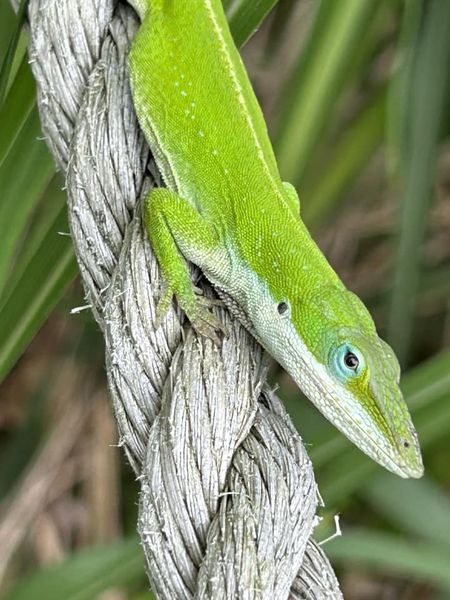
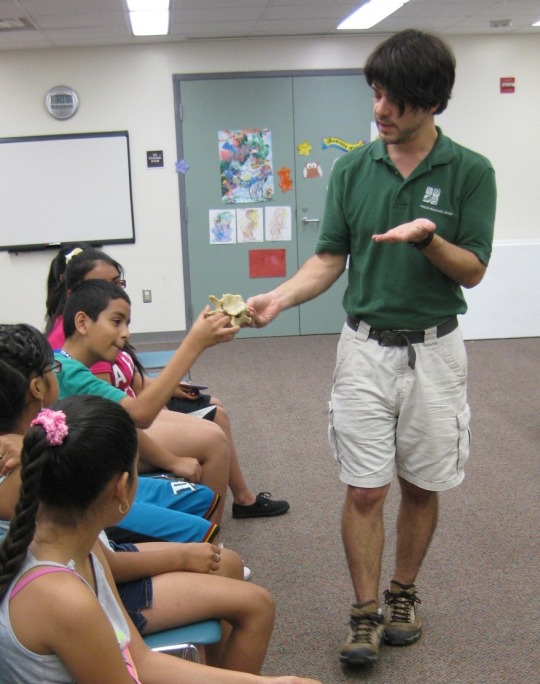

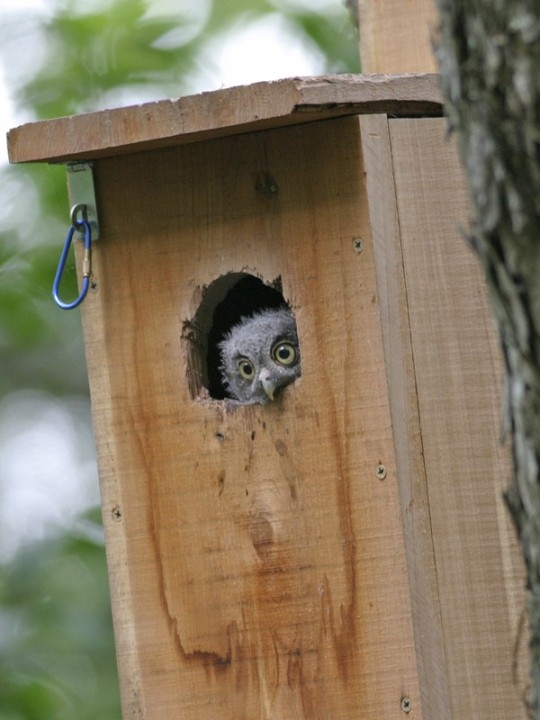
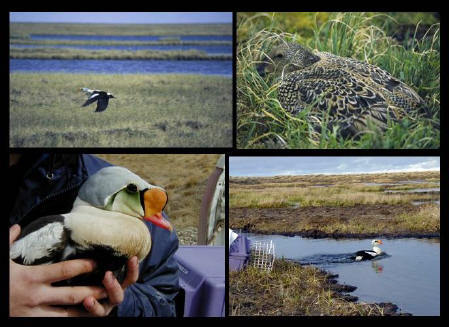

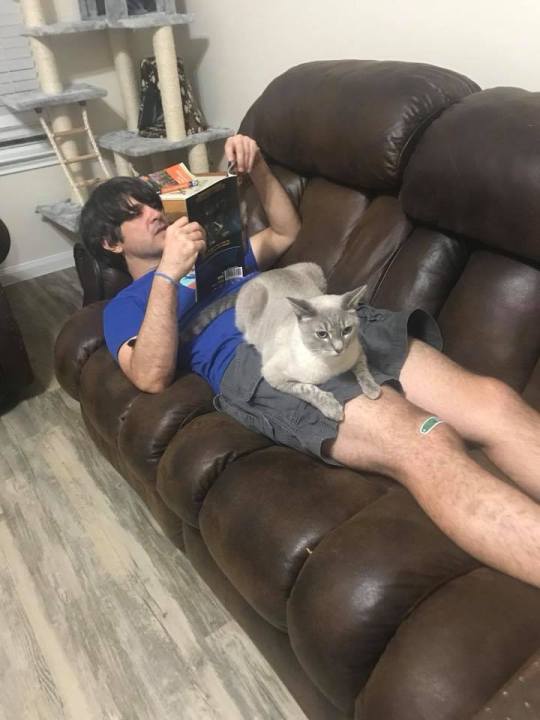

We finally reached 30,000 followers!
Hey y’all, I just wanted to say thank you so much for following the blog. I’ve had a big influx of followers lately, so I thought I’d re-introduce myself.
HI, I’m Paxon. I’m a wildlife biologist, and I work as a naturalist at a nature center in Houston, TX, USA. I’m cis-male, gay, and interested in a variety of leftist political philosophies. Trans-inclusionary intersectional feminist, vegetarian, ANTIFA, anti-racist, Latinx.
This is a science-natural history-wildlife-conservation-biodiversity blog (with some politics, philosophy, Pokémon, anime, poetry, punk, art, cats, gay stuff, naked guys, and other personal interests). :3
____________________________________________________________
I’ve worked in wildlife science and environmental education since I was 17 years old (I’m 45 btw). My field experience includes:
bird surveys,
small mammal surveys,
deer counts,
amphibian call counts,
bayou fish surveys,
reptile and amphibian surveys,
insect surveys,
Loggerhead sea turtle monitoring in Viginia Beach,
Piping Plover monitoring on Long Island, NY,
shark surveys in Florida Bay,
King Eider monitoring on the Arctic tundra of Alaska,
Bluebird and Prothonotary Warbler nest box surveys,
wetland plant monitoring,
prairie and bayou restoration projects.
I’ve worked as a guide and naturalist here in Texas, Corkscrew Swamp in Florida, and at Sacha Lodge in the rainforest of Eastern Ecuador, near Yasuni. #SachaRuna
I AM AN AVID BIRDWATCHER, and spend a lot of time hiking. My nature and outdoor interests include: herpetology, entomology (especially native bees, butterflies, moths, and beetles), malacology, native wildflowers, native wildscape/pollinator gardening, marine biology, and hiking.
I identify animals for people for a living, so if you have any nature questions, or would like me to ID animals for you, I’m here...
https://typhlonectes.tumblr.com/ask
I’m also here if you just wanna chat, say hi, or talk about something else.
Ciao, and thank you for following, I love you,
Paxon
146 notes
·
View notes
Text

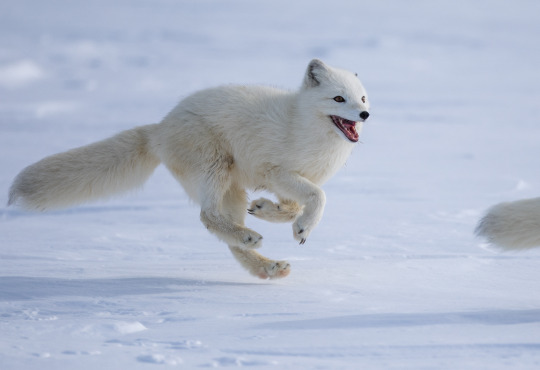


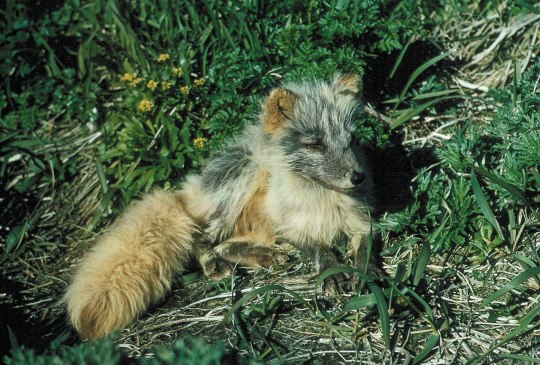
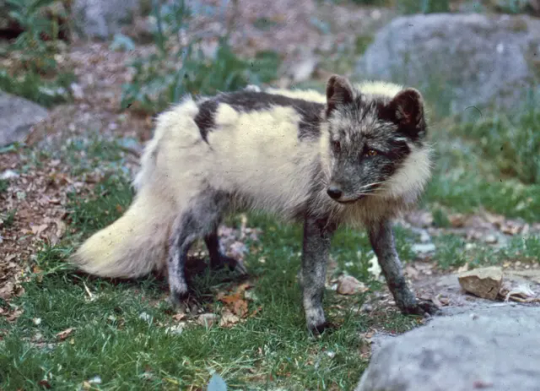
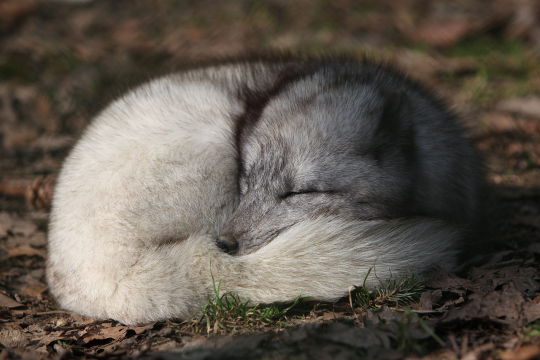
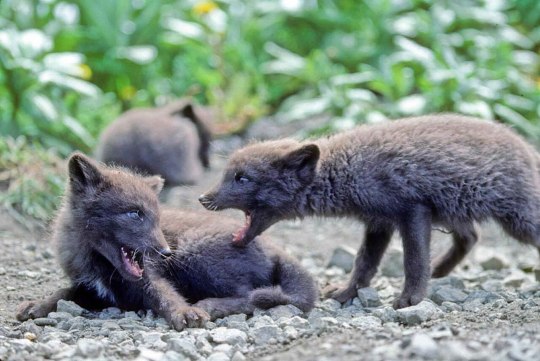
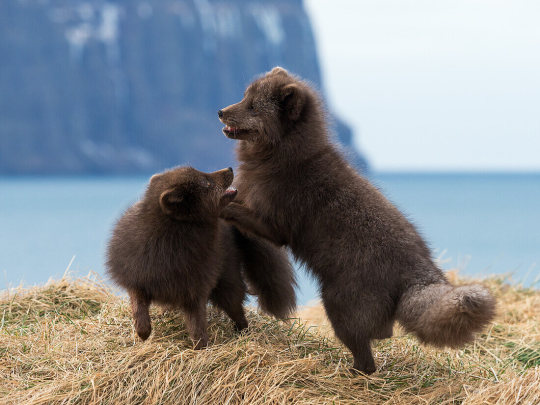


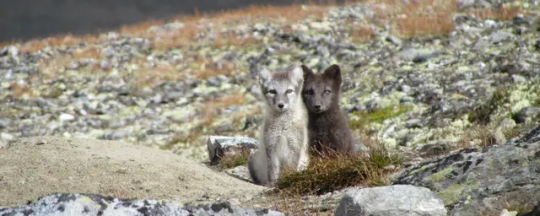
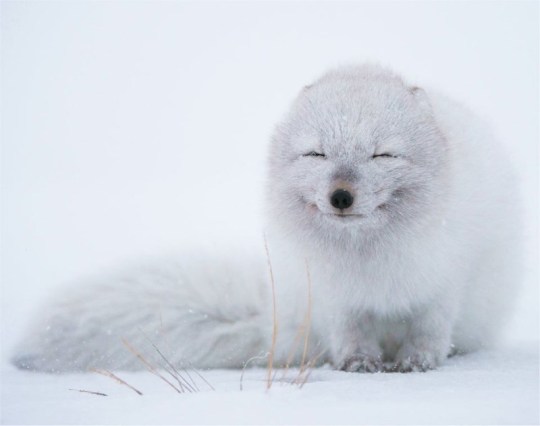
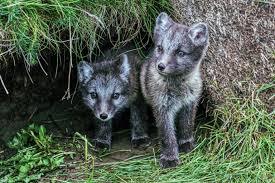
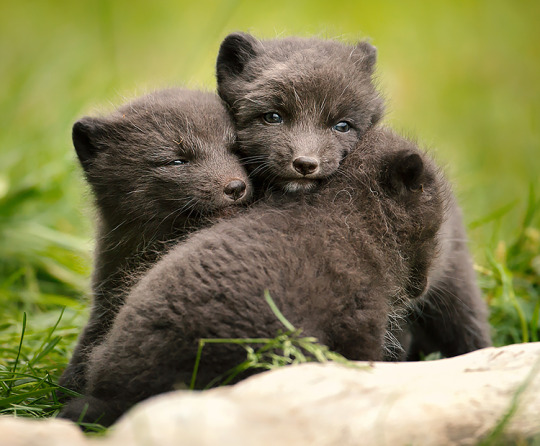
Vulpes lagopus also known as the arctic fox, white fox, polar fox, or snow fox is a small species of fox native to the polar regions of the Northern Hemisphere where it dwells throughout Greenland, Findland, Norway, Sweden, Canada, Alaska, and many Arctic islands. Being the only land mammal native to Iceland. Arctic foxes mostly inhabit tundra, taiga, and pack ice but can also be found in the boreal forests of Canada and Alaska. The color of the fox's coat also determines where they are most likely to be found. The white morph mainly lives inland and blends in with the snowy tundra, while the blue morph occupies the coasts because its dark color blends in with the cliffs and rocks. The arctic fox is a generalist omnivore which typically eats any small animal they can find, including lemmings, voles, other rodents, hares, birds, seal pups, fish, insects, and shellfish in addition to berries, flowers, seaweed, carrion, and bird eggs. Arctic foxes are themselves eaten by eagles, wolves, wolverines, red foxes, and bears. Arctic foxes survive winters and food scarcity by both hoarding food in buried caches and storing large amounts of body fat. Reaching around 18 to 27inches (46 to 68cms) in body length with typically 12inch (30cm) long tail, and 3.1 to 20.7lbs ( 1.4 to 9.4kgs) in weight, the arctic fox is a small canine with a generally compact body shape, long fluffy tail, short muzzle and legs, and short, thick ears. It sports numerous adaptations to the extreme cold such as fur covered foot pads and dense multilayered pelage, which provides excellent insulation. To prevent heat loss, the Arctic fox curls up tightly tucking its legs and head under its body and behind its furry tail. There are two genetically distinct coat color morphs: the white morph has seasonal camouflage, white in winter and brown along the back with light grey around the abdomen in summer. The blue morph is often a dark blue, brown, or grey color year-round. Both morphs sport distinct summer and winter coats. Arctic foxes form monogamous pairs during the breeding season (from April to May) and they stay together to raise their young in complex underground dens. Occasionally, other family members may assist in raising their young, forming larger socially dynamic packs. These larger packs are particularly common in areas where the arctic fox overlaps with the red fox. After a 52 day pregnancy a mother arctic fox may give birth to up to 25 young. The young emerge from the den when 3 to 4 weeks old and are weaned by 9 weeks of age. Under ideal conditions an arctic fox may live up to 14 years.
#pleistocene pride#pliestocene pride#cenozoic#fox#arctic#wildlife#animal facts#animal#canine#arctic fox
14 notes
·
View notes
Text
peony

Well, November is upon us and the year is drawing to a close. Or another beginning depending on how you look at it. In the Northern Hemisphere the leaves are busy changing colors, the birds are halfway to their winter homes, the last butterfly cocoon is tucked in and hidden for the coming cold and November children are busy trying to fend off Christmas decorations long enough to celebrate their birthdays.
Let's talk about flowers to help with that.
November has two official flowers. The chrysanthemum and the peony. Happenstance I re-imagined a peony ghost story for Halloween so we're going to talk about that flower for this post.
The peony can either be a tree blossom or a more tradition herbaceous flower. Native to Asia, Europe and North America, most of the time when we think of peony flowers, we're thinking of the ones that were cultivated and rose to fame in China. From 618 to 907, the Tang dynasty was in power in China and while the previous Sui dynasty had seen a growing fascination with the peony, it was the Tang dynasty that solidified it as a symbol of China, filling the imperial gardens with them. The Song dynasty that followed saw the city of Luoyang becoming both the capitol of the dynasty and of peony cultivation, a distinction that the city still, peony at least, holds to this day. The Quing dynasty saw the city of He Ze, or Cáozhōu, becoming a second center for peony flowers. Cáozhōu is also still a center for peony exhibitions and state-funded research. The peony was the official flower of China until 1929. To this day it is still known as 'the King of the Flowers'.
The peony's fame didn't stay in China however. Japan saw the introduction of the flower sometime before the tenth century and fell in love with it as well, working the peony into their stories and folklore. In the nineteenth century, Europe went wild for the flower, especially in France and the United Kingdom where cultivators began experimenting with various strains, and the Netherlands became the largest exporter, a distinction they hold to this day with over 50 million stems sold each year. In a fun twist, Alaska is starting to show up as an exporter as well, with its long sunny days during the summer turning out to be prime for the flowers' growth.
The peony isn't just a pretty face either. Before it was celebrated for its beauty it was known as a medicinal plant. In China and Japan, the peony root was used to treat convulsions. To this day, people still use its petals in teas and salads. In England, children wore necklaces made of the root to help with teething and prevent seizures. The peony even, very early on, spread as far as regions of the Mediterranean were we got the standard english version of its name from Greek myths. In one, Apollo, to no one's surprise, is pursuing a nymph named Paeonia, who grew embarrassed when she realized Aphrodite was being a voyeur about it and, for that sin, Aphrodite turned her into a flower. In the other myth, there's a physician named Paeon, who used the root of the peony flower to cure Pluto. Paeon's mentor, the god of medicine Aesculapius, grew jealous of this feat and attempted to kill his student. Again a god fell back on the flower solution and Pluto (or Zeus in some versions) turned Paeon into a peony flower so everyone would praise him for being beautiful. Because - priorities.
As for superstitions about the peony - its considered dangerous to pick its seeds while a woodpecker is about. If it sees you, it will peck out your eyes! A peony bush full of flowers is good luck but once they start to wilt and fall off you should prepare for bad luck (given its natural for flowers to do this, gardeners apparently need to get picking). It's also bad luck to give or receive an odd number of peony flowers in a bouquet or to have an odd number bloom on your bush. Fairies are rumored to hide in a peony flower's petals. Thanks to Utagawa Kuniyoshi, a Japanese master ukiyo-e artist from the 1800s, who drew warriors with peony tattoos, the flower can symbolize, especially in tattoos, a masculine devil-may-care and 'damn the consequences' attitude. The red peony in Serbia is said to spring from the blood of the Serbian warriors who died in the Battle of Kosovo in 1389. It is the state flower of Indiana in the United States.
In the language of flowers, the peony can represent shame or bashfulness. The flower also symbolizes romance, wealth, honor, bravery, compassion and a happy relationship or happy marriage. It is also the flower given on the twelfth wedding anniversary.

#peony#birth flower#november#cottagecore#folklore#superstition#herbalism#birth month flower#encouragement#birth month#november flower#china#greek mythology#alaska#indiana
27 notes
·
View notes
Note
Silly Game Time: In every nation, a giant flamingo (300 feet or 91.4 meterstall) shall be erected. And *you* get to decide where one of them will go on your continent, without any restrictions at all!
Where are you placing it?
I want this bird even bigger. Even higher. Tallest birb. In the clouds. Future peoples will gaze upon her and revere her as the fuchsia deity she is, standing proudly, leg cocked, against the wind and the snow. Four thousand miles from her native lands, she has shunned the warmth of the Gulf sun on her feathers for the chance to brush the heavens, to watch the aurora borealis wash across her rose wings in celestial tides of emerald and aquamarine. Seasonal flocks fly south for the winter, and she, bolted to steel and concrete and staring down days of endless night, asks them to come back in the summer and warm her with stories of home.
I’m slammin’ that big girl on top of the tallest peak in North America: Denali, in Denali National Park and Preserve in Alaska.
2 notes
·
View notes
Text
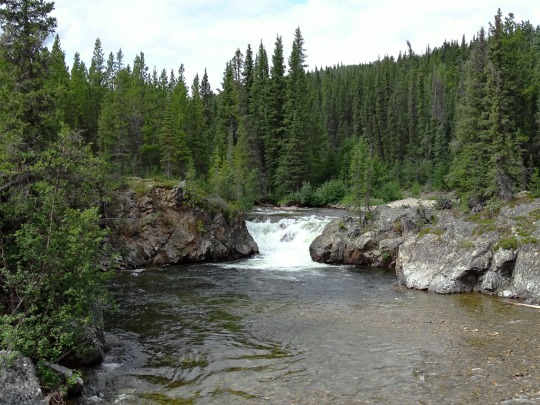
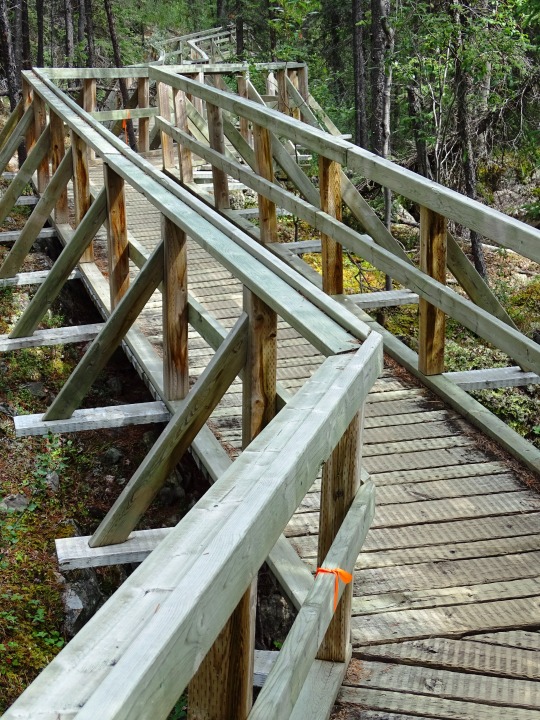
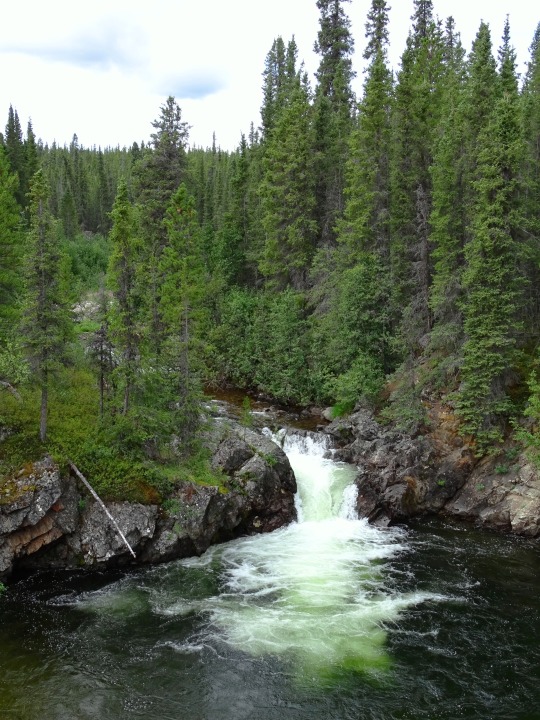
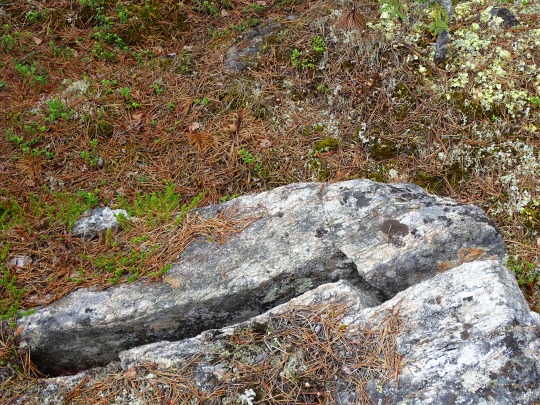
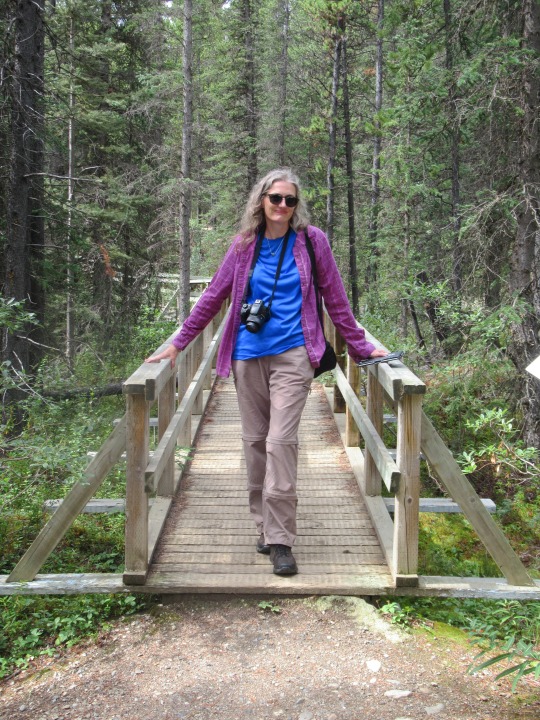
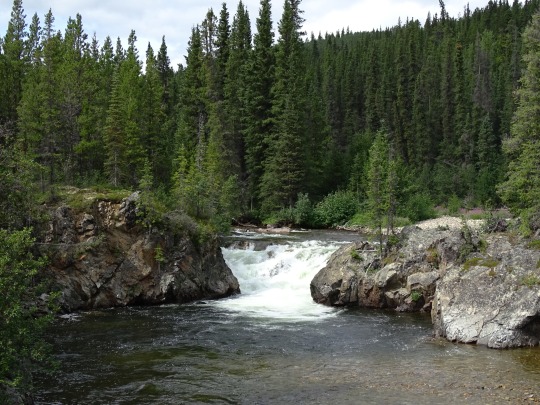


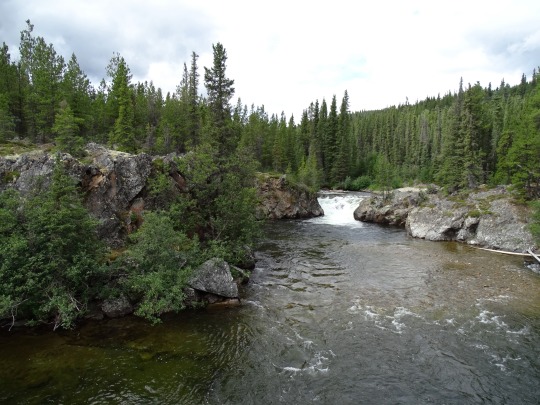
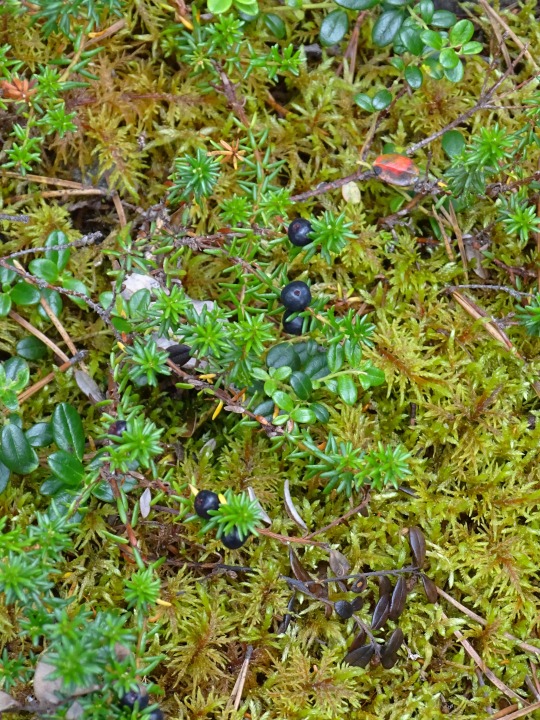
Rancheria Falls Recreation Site, YT (No. 6)
Empetrum nigrum, crowberry, black crowberry, or, in western Alaska, blackberry, is a flowering plant species in the heather family Ericaceae with a near circumboreal distribution in the Northern Hemisphere. It is usually dioecious, but there is a bisexual tetraploid subspecies, Empetrum nigrum subsp. hermaphroditum, which occurs in more northerly locations and at higher altitude.
The species has a near circumboreal distribution in the Northern Hemisphere. It is also native in the Falkland Islands.
Evolutionary biologists have explained the striking geographic distribution of crowberries as a result of long-distance migratory birds dispersing seeds from one pole to the other.
Empetrum nigrum grows in acidic soils in shady, moist areas.
The fruit is edible and can be dried. However, it has an acidic taste and can cause headaches. It is abundant in Scandinavia and treasured for its ability to make liqueur, wine, juice, or jelly. In subarctic areas, the plant has been a vital addition to the diet of the Inuit and the Sami. The Dena'ina (Tanaina) harvest it for food, sometimes storing in quantity for winter, sometimes mixed with lard or oil.
The species can also be grown as a ground cover, or as an ornamental plant in rock gardens, notably the yellow-foliaged cultivar 'Lucia'. The fruit is high in anthocyanin pigment and can be used to make a natural dye.
Source: Wikipedia
#Arctic Kidney Lichen#Black crowberry#Coast Range subalpine fir#Rancheria Falls Recreation Site#boardwalk#travel#original photography#vacation#tourist attraction#landmark#architecture#forest#woods#Rancheria Falls#Rancheria River#Yukon#the North#flora#pine#fir#lichen#rocks#free admission#nature#Canada#summer 2023#landscape#countryside#Sub-alpine fir#dead wood
4 notes
·
View notes
Text
In the United States 🇺🇸 around twenty five states are of Native American origin.
Alabama- named for the Alabama or Alibamu Muskogean tribe means “clearer’s of the thickets.
Alaska- named for the Aleut word Alaxsxqua means mainland.
Arizona- named for an O’odham word Alisonak meaning “small spring”.
Arkansas- origin uncertain Alkansia south west people Alkansas.
Connecticut-named after a Mohican word Quonehtacut , means place of long tribal river.”
Dakota North/South a Dakota word meaning Friends or Allies.
Hawaii- is an original Hawaiian word meaning “homeland”.
Illinois-named after the Illinois word Illniwek meaning men.
Iowa-named for the Ioway Tribe whose name means “gray snow”.
Kansas- named for the Kansa Tribe whose name means “South Wind People “.
Idaho-not known origin but thought to be a “Gem of the Mountains “.
Indiana-presumably named for the people living along the river or natives living near western Pennsylvania.
Kentucky- origins unclear it may have been Iroquoian name Kentake” meaning the meadow land of tomorrow.
Massachusetts- named for the Algonquin word Massadchu-es et means “ great hill-small place”.
Michigan- from Chippewa word Michigama “ meaning large lake “.
Minnesota- named for the Dakota Indian word Minisota meaning “white water or mist with smoke “.
Mississippi-named for the river by the Choctaw Tribe meaning “Great Waters or Father of Waters”.
Missouri-named for the Missouri Tribe means “Dugout Canoes”.
Oklahoma- Choctaw Nation means “Land of the Red Men”.
Tennessee- Cherokee origin from the tribe living on the Tanassee or Tennese River means “Bend in the River”.
Utah- named for the Ute Tribe that lived there
Wisconsin- named for its principal river means “Wild Rushing Channel” also refers to holes in its banks for nesting birds.
Wyoming- from the Delaware or Leni-Lanape word mouth-wari-wama means “Mountains and Valleys alternated”.
7 notes
·
View notes
Text

The Narragansett Turkey (Pictured, an animal at the Knoxville Zoo) is an historic breed Named after Rhode Island's Narragansett Bay. It's a cross between the wild turkey and domestic turkey. Photograph By Joel Sartore, National Geographic, Photo Ark
Wild Turkeys Are at a Record High in New England—But Not All are Thankful.
When Turkeys were Reintroduced about 50 Years Ago, No One Dreamed the Birds Would Thrive in the Suburbs. And now, They’ve Become a Nuisance.
— Published: November 25, 2019 | Updated: November 20, 2023 | By Brian Handwerk
Amherst, New Hampshire— Wild turkeys are a familiar sight throughout New Hampshire, where flocks strut along roadsides and wander through backyards.
Ted Walski knows this better than anyone: He’s the man responsible.
In 1975, the biologist for New Hampshire Fish and Game released 25 turkeys from the back of his truck in Walpole, a town in the western part of the state. It was part of a reintroduction effort to bring back a species that had been wiped out in New England before the Civil War, thanks to a one-two punch of vanishing forests and unchecked hunting.
“Originally, I never thought it would get beyond a few thousand turkeys,” says Walski, who spent nearly 50 years working with the birds before retiring in 2019.
Instead, New Hampshire’s turkey population has exploded beyond all expectations, and now hovers around 45,000 animals—the highest since reintroduction, and probably the most the state can handle. Reintroduction efforts in neighboring states and around the country have created a similar story—there are 70,000 wild turkeys in Maine, up to 50,000 in Vermont, and more than 30,000 in Massachusetts—all of which totals up to about six million animals reproducing in every state but Alaska.
So what made the wild turkey one of the most successful wildlife reintroduction programs in American history? Most likely, it’s due to the bird’s surprising—and unexpected—ability to live among humans. In the suburbs, turkeys can take advantage of edge habitat, like woods and open spaces, and dine on a never-ending buffet of food provided by people—particularly birdseed. It doesn’t hurt that native predators, such as wolves and cougars, have also largely disappeared from most parts of the turkey’s range.
But not everyone is thankful for the New England turkey boom. The notoriously bold birds are a nuisance, disrupting traffic and pecking at front doors (or, a police station a few days before Thanksgiving), as well as potentially dangerous: In 2019, a 35-year-old pregnant woman was attacked by turkeys on the streets of Cambridge, Massachusetts—twice. As conflicts between these 20-pound birds and people are on the rise, particularly during the spring breeding season, wildlife officials are trying to cope with the reality that the turkey is here to stay.
“I would wager that 40 years ago nobody expected there to be booming turkey flocks in suburban and urban areas,” says David Scarpitti, a wildlife biologist with the Massachusetts Division of Fisheries and Wildlife. “But it’s pretty obvious that they aren’t just passersby.”

A flock of wild turkeys walk on a suburban driveway in West Newbury, Massachusetts. Photograph By Frank Vetere, Alamy
How Turkeys 🦃 🦃 🦃 Came Back
In 1634, William Wood noted the abundance of turkeys in his book “New Englands Prospect,” writing that “sometimes there will be forty, three score, and a hundred in a flocke, sometimes more and sometimes lesse.” According to Wood, unregulated hunters in the 17th century might kill 10 or 18 turkeys a day, a practice that essentially doomed the northeastern populations.
In the 1960s and 1970s, many U.S. states reintroduced turkeys back into their native habitat, where the omnivores play a vital role of keeping several plant and invertebrate populations in check. Walski captured his original 25 birds from the Allegheny Mountains on the New York-Pennsylvania border, releasing them along the fertile Connecticut River Valley, on the border with Vermont.
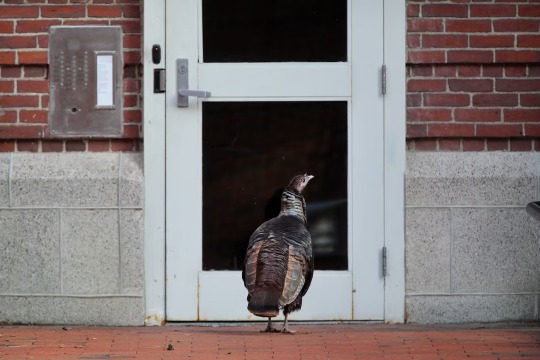
A female turkey pauses at a doorway on Mt. Auburn Street in Cambridge, Massachusetts. Photograph By Craig F. Walker, The Boston Glob/Getty Images
Initially, Walski targeted farmlands because there was evidence that turkeys needed to supplement their diet—nuts and acorns—with farm foods, such as manure and discarded corn, in the winter.
Yet apparently turkeys were tougher than thought, as they have continued to thrive despite a massive decline in New Hampshire dairy farms—from more than 600 in 1975 to under a hundred today.
Much of their survival is due to backyard birdfeeders, he says. “When you’ve got a couple of feet of snow in the middle of the winter, that’s their salvation," Walski says.
Turkey 🦃 Troubles
One community with a notable increase in wild turkeys is Brookline, Massachusetts, a suburb near Boston.
“I grew up in Brookline, and as a kid in the 1990s, I don’t remember ever seeing turkeys,” says David Cheung, a former animal control officer for the Brookline Police Department. “Now there’s a flock that hangs out at the high school. And the number of calls we get about turkeys definitely keeps increasing.”
Without hunting and predators, “we don’t have any population control for turkeys,” he says. The city has euthanized a few birds over the years—a few of them were injured—but it’s not an official policy.
Most of the conflicts with the birds stem from their tendency to parade through the streets, blocking traffic. “Motorists are like a deer in the headlights. They don’t know what to do, so they just stop,” Cheung says. That leads to another problem: Turkeys will often attack their reflection in a car’s shiny exterior. “You’ll see turkeys pecking at someone’s car, and the motorist will just be in shock and not know what to do.” (Read our tips for how to stay safe around wild animals.)
Turkeys have always been plucky: New Englander Ben Franklin made note of their feisty nature in a 1784 letter to his daughter, noting that the birds “would not hesitate to attack a grenadier of the British guards who should presume to invade his farm yard with a red coat on.”
But what’s different now is that turkeys are learning how to live in urban environments, Scarpitti says.
“The more familiar they get with people, the more they are apt to demonstrate this [dominant] behavior that’s rooted in their biology. They do it to each other all the time. But when they have no fear of humans, they kind of assimilate humans into that routine.”
Coexisting
Of course, many people enjoy seeing wild turkeys; the male’s impressive plumage, for instance, is a sight to behold. In a 2022 New Hampshire Fish and Game Survey, just one percent of all respondents said they “Strongly Disliked” Turkeys.
“It’s astounding, even to me, that in our surveys over 97 percent either like or strongly like turkeys,” Walski said. “It’s only a percent or two that have some ax to grind.”
Many urbanites seem to agree. “A lot of [Brookline] residents find it fascinating for these animals to be in the city, and that’s one of the things that drives people to feed them,” Cheung says.
But what’s best for both turkeys and people is to avoid feeding them—and that includes ditching the birdfeeders, wildlife managers say.
Other strategies for coexisting with turkeys are protecting gardens (for instance covering plants with netting), obscuring reflective surfaces that might trigger a territorial turkey, or hazing birds that come too close with loud noises or a water hose.
Tough Old Bird 🦃
In much of the Southeast and New York, where wild turkeys experienced similar comebacks in the latter half of the 20th century, the bird’s numbers have dropped in recent decades.
So it’s possible that may also happen in New England, where reintroduction occurred later than in those other states, says Matt DiBona, a wildlife biologist at the National Wild Turkey Federation, a nonprofit dedicated to promoting wild turkey hunting and conservation.
“There is the potential for increased predators, declining nesting success, disease—those are all pressures that we might expect to apply to New England turkeys,” DiBona says.
But Scarpitti suspects that New England’s suburban turkeys may have found a niche so robust that they’re insulated against such changes—and even New England winters may not be a deterrent.
“The conditions that we had that winter of 2014-15 are the worst situation possible for wild turkeys, and by my estimation it had pretty much zero effect on the turkey population because they are so buffered by that supplemental food,” he says. “So if populations didn’t drop that year, I just don’t think it’s going to happen.”
Instead, it seems likely that turkeys will become as familiar a sight in America’s backyards as they are on our Thanksgiving dinner plates.
4 notes
·
View notes
Text
Since my blog already is pure chaos I'm gonna share drawings that are in no way related to the main topic of it: Gwen simping.
So here is Shee Barn, my Miss Peregrine's home for the peculiar children OC

And here is some information (no one cares about) about how I created this OC.
I wanted to do a Ymbryne and knew I wanted a Barn Owl.
Barn Owls have that very peculiar heart-shaped form on their head, and I thought vitiligo was perfect to represent it. And to add more contrast, I wanted a non-white person. Where do Barn owls live? All over the world, I could choose any non-white people.
As I don't have many Native American OCs, I decided to go with this.
As I don't know anything about Native Americans, I had to do some research, especially about the tribe I wanted her to be. My first thought was that I wanted her to be Inuit, and I chose Dena'ina people because I wanted her to speak Russian amongst other languages.
Then, as her facial traits didn't really look like Inuit people's, and as I know indigenous people have often (? I don't know the frequency of it haha, just saw one or two tik toks saying it was difficult to find partners because they were all related even from different tribes) parents from different tribes, I decided to add another tribe, from South North America.
I didn't want it to be Apache, Cheyenne, Sioux or Navajo (bcz they are too famous, I wanted a less-known tribe). Arapaho seemed to be a good choice (and I liked the dress on the Wikipedia page)
So her mother is a Dena'ina woman, and her father is an Arapaho man. I know they don't live in the same area, but people travel I guess?
As Dena'ina is matrilineal, she lived in Alaska for the first years of her life (but I won't detail her history here)
The name:
Miss Peregrine is a peregrine falcon. Miss Avocet is an avocet. We can assume all Ymbryne have for a last name the bird specie's name. So her last name is Barn.
Barn owls were mistaken for Banshees back in the day in the Celtic world, and even tho she is not Celtic, I decided to call her Shee. Banshee, Barn Shee. (plus, in her personal history, she is related to banshees)
Her appearance:
So she has this heart-shaped form on her face and in some spots, her hair is turning white too (at the end, all her hair will be). She has dark eyes as a barn owl.
I know the tattoo chin isn't like the real native's ones, but I let myself a little freedom about that.
And then the jewellery is inspired by Inuit jewellery.
#Art#Oc#Miss peregrine#miss peregrine's home for peculiar children#I tried to be accurate with native culture but I'm not educated yet about this so I'm sorry#Alder's out of topic posts
9 notes
·
View notes
Text
The Texas entrepreneur working to bring back the woolly mammoth has added a new species to his revival list: the dodo.
Recreating this flightless bird, a symbol of human-caused extinction, is a chance for redemption. It might also motivate humans to remove invasive species from Mauritius, the bird's native habitat, said Ben Lamm, CEO and co-founder of Colossal Biosciences.
"Humanity can undo the sins of the past with these advancing genetic rescue technologies," Lamm said. "There is always a benefit for carefully planned rewilding of a species back into its native environment."
The dodo is the third animal that Colossal Biosciences — which announced Tuesday it has raised $225 million since September 2021 — is working to recreate.
And no, the company isn't cloning extinct animals — that's impossible, said Lamm, who lives in Dallas. Instead, it's focusing on genes that produce the physical attributes of the extinct animals. The animals it's creating will have core genes from those ancestors, engineered for the same niche the extinct species inhabited.
The woolly mammoth, for instance, is being called an Arctic elephant. It will look like a woolly mammoth and contribute to the Arctic ecosystem in a way that’s similar to the woolly mammoth. But it will technically be an Asian elephant with genes altered to survive in the cold. Asian elephants and woolly mammoths share 99.6 percent of their DNA.
The mammoth was the company's first project because it had long been a passion for Harvard University geneticist and Colossal co-founder George Church. He believes that Arctic elephants are the key to creating an Ice Age-like ecosystem with grasslands and grazing mammals, and this could help fight climate change by sequestering carbon under permanently frozen grounds that span areas including Siberia, Canada, Greenland and Alaska.
The altered genes could also give elephants a new habitat that’s far away from the destructive forces of (most) humans, and the company's gene editing technologies could help eradicate elephant diseases.
The company's de-extinction projects seek to fill ecological voids and restore ecosystems, Lamm said. The Tasmanian tiger, which Colossal announced as its second de-extinction animal in August of 2022, is a good example. This tiger was the only apex predator in the Tasmanian ecosystem. No other animal filled its place when it went extinct.
Apex predators eat sick and weak animals, which helps control the spread of disease and improves an ecosystem's genetic health. So the tiger's extinction could have contributed to the near-extinction of Tasmanian devils that lived in the same ecosystem, Lamm said.
For the dodo, Colossal is partnering with evolutionary biologist Beth Shapiro, a scientific advisory board member for Colossal who led the team that first fully sequenced the dodo's genome.
The dodo went extinct in 1662 as a direct result of human settlement and ecosystem competition. They were killed off by hunting and the introduction of invasive species. Creating an environment where the dodos can thrive will require humans to remove the invaders (the non-human invaders, anyway), and this environmental restoration could have cascading benefits on other plants and animals.
"Everybody has heard of the dodo, and everybody understands that the dodo is gone because people changed its habitat in such a way that it could not survive," Shapiro said. "By taking on this audacious project, Colossal will remind people not only of the tremendous consequences that our actions can have on other species and ecosystems, but also that it is in our control to do something about it."
The company has secured $150 million in funding to revive this bird and build an Avian Genomics Group, bringing the company's total fundraising to $225 million.
Colossal has more than 40 scientists and three laboratories working to recreate the woolly mammoth, and they hope to have mammoth calves in 2028. There are 30 scientists working on the Tasmanian tiger.
Reviving extinct animals is not a quick process, especially when considering the development of new technologies and the natural processes of Mother Nature (elephant gestation takes 22 months!). Some of Colossal's projects will take nearly a decade to complete, which is why the company is working to reintroduce multiple animals at the same time.
"Given the rapidly changing planet and various ecosystems heavily influenced by humankind, we need more tools in our tool belt to also help species adapt faster than they are currently evolving," Lamm said.
And the tools aren't limited to extinct animals. Colossal is developing technology that can benefit other industries, and it's spinning these out into new companies. Last year, it spun out a software platform called Form Bio that's designed to help scientists collaborate and work with their data, visualizing it in meaningful ways rather than looking at raw numbers in a spreadsheet.
"Synthetic biology will allow the world to solve various human-induced, world-wide problems," Lamm said, "like making drought-resistant livestock, curing certain disease states in humans, creating corals that are tolerant to various salinities and higher temperatures ... and much more."
18 notes
·
View notes
Text
Excerpt from this press release from the Department of the Interior:
The U.S. Fish and Wildlife Service is awarding more than $6.4 million to federally recognized Native American and Alaska Native Tribes to benefit fish and wildlife resources and their habitats. This year’s funding will support 35 Tribes for conservation projects across 15 states, benefiting a wide range of wildlife and habitat, including species of cultural or traditional importance to Indigenous communities.
Examples of projects approved this year include:
Sitka Tribe of Alaska (Artificial Intelligence for Subsistence Salmon Monitoring and Management) - $200,000 to install artificial intelligence enabled video that will produce automated real-time counts of Redoubt Lake sockeye salmon, reducing real-time monitoring costs.
Navajo Nation (within Arizona, New Mexico and Utah)(Estimating Abundance, Preserving Traditional Ecological Knowledge, and Resolving Human-Bear Conflict of Black Bears on the Navajo Nation) - $100,000 to assess black bear population on Navajo Nation lands, preserve Traditional Ecological Knowledge in effective habitat management and minimize human-bear conflicts.
Mooretown Rancheria of Maidu Indians of California (Tribal Wildlife and Postfire Restoration for Habitat Connectivity, Pollinator Species and Traditional Ecological Knowledge Plants around Feather Falls) - $197,300 to restore and manage ancestral lands which were devasted by the 2020 North Complex fire, including hiring staff, expanding the Tribal youth program and developing a restoration plan that incorporates Traditional Ecological Knowledge to prioritize culturally significant and endangered species such as the California spotted owl, bald eagle, Sierra Nevada yellow-legged frog and California red-legged frog.
Red Lake Band of Chippewa Indians (within Minnesota) (Red Lake Band of Chippewa Indians White-tailed Deer and Golden-winged Warbler Critical Habitat Restoration Project: Setting Back Forest Succession to Promote Early Successional Wildlife Species) - $199,872 to create 350 acres of early successional forest habitat, supporting deer population recovery and increasing habitat for golden-winged warblers during breeding season.
Omaha Tribe of Nebraska (Tallgrass Prairie Resource Management) - $199,965 to hire staff to restore, maintain, and enhance habitat for ecologically and culturally significant wildlife species within the Omaha Tribe of Nebraska reservation, including invasive species removal and buffalo management.
Seneca Nation of Indians (within New York) (Seneca Nation Wood Turtle Survey) - $42,713 to tag wood turtles, a culturally important species, with GPS transmitters to track and map home areas and nesting grounds.
Eastern Band of Cherokee Indians (within North Carolina)(Leveraging DNA Sampling to Understand and Manage Resources) - $200,000 to continue cutting-edge non-invasive resource management techniques and use environmental DNA (eDNA) and a variety of non-invasive methods (camera, trapping, acoustics, etc.) to evaluate and manage bear populations, sicklefin redhorse, native brook trout, bats, otters, fish, aquatic communities, birds, and amphibians.
Shoalwater Bay Indian Tribe (within Washington) (ESA Species Critical Coastal Habitat and Traditional Fisheries Restoration and Monitoring) - $198,928 to continue improving the conservation status of the western snowy plover and streaked horned lark and implement essential fish habitat assessments, eDNA and visual monitoring and restoration actions to support climate resilience and adaptive capacity of these species on Tribal lands.
7 notes
·
View notes